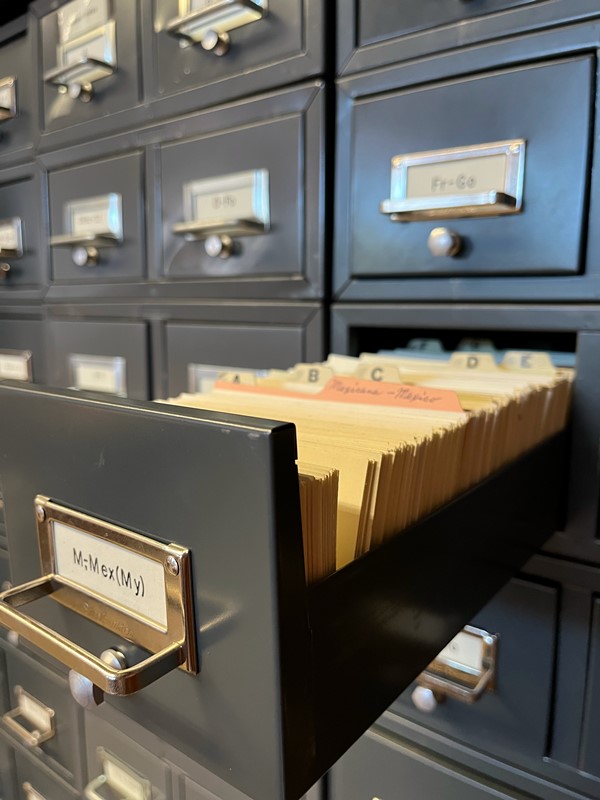Last week I talked about the taxonomy I created for the philatelic library, and the tension between “aboutness” and “isness.” A question was brought up about filing a piece of ephemera by subject (“aboutness”), and how the patron might not be able to find that ephemera if they were approaching the topic differently, and were looking under a different subject.

If there’s anything librarians are great at, it’s organization! We love a good cross-reference, see also, and index! We have different “access points” to items. Access points are the means by which a patron finds what they’re looking for. In the case of books, the access points are author/creator, title, and subjects. In the case of these ephemera files, it’s the subject matter that is the access point. The taxonomy consists of concepts/terms that are the subject matters of the item. The terms are also folder names.
Physical folders can only exist in one place. Items in the folder can only exist in one place as well (unless photocopies are made, which limits space for unique items, so is not desirable). Unlike a digital asset, which can be tagged with various terms in the metadata, in order to facilitate findability, there is no “tagging” of paper items. The principle is the same, but the execution is different.
The clientele of the philatelic library prefer things to be paper-based (their chief concern is postage stamps, after all!). I created an ephemera manual complete with folder listing, scope notes, and index. It describes the methodology for the taxonomy concepts. It also includes directions for future folder (taxonomy concept) creations. The index is where primary terms and synonyms (in taxonomy-speak, alternate labels) are listed.
The manual has two audiences: library staff and patrons. It is a guide for patrons searching for information, and it is also the documentation of the governance of the taxonomy. It helps library staff know where to file an item. It defines the criteria for creating a new concept, and editorial guidelines for creating new concepts. In taxonomy governance documents at larger organizations and firms, roles, responsibilities, and communication pathways are defined. Because the philatelic library is part of a small non-profit, there isn’t any need for defining roles, responsibilities, or communication pathways (I am a solo librarian).
Even in a situation where the data is paper-based, even when the organization is small, creating and using governance, and documenting it, is important. The principles are the same as with a larger, digital-based organization, but the execution is different. Taxonomy governance keeps the taxonomy alive but consistent, able to grow and change as needed in a manner that will keep the collection useful.